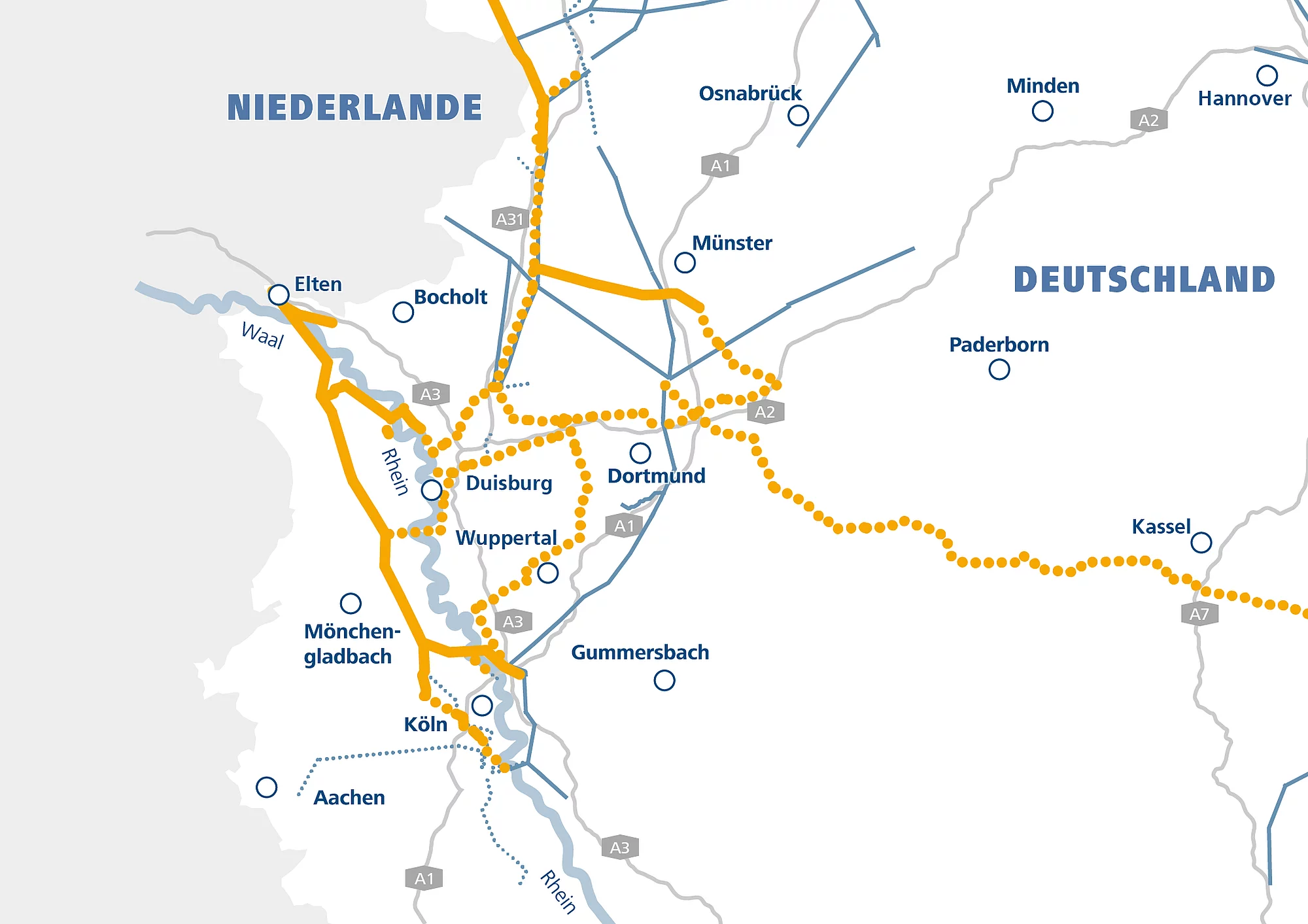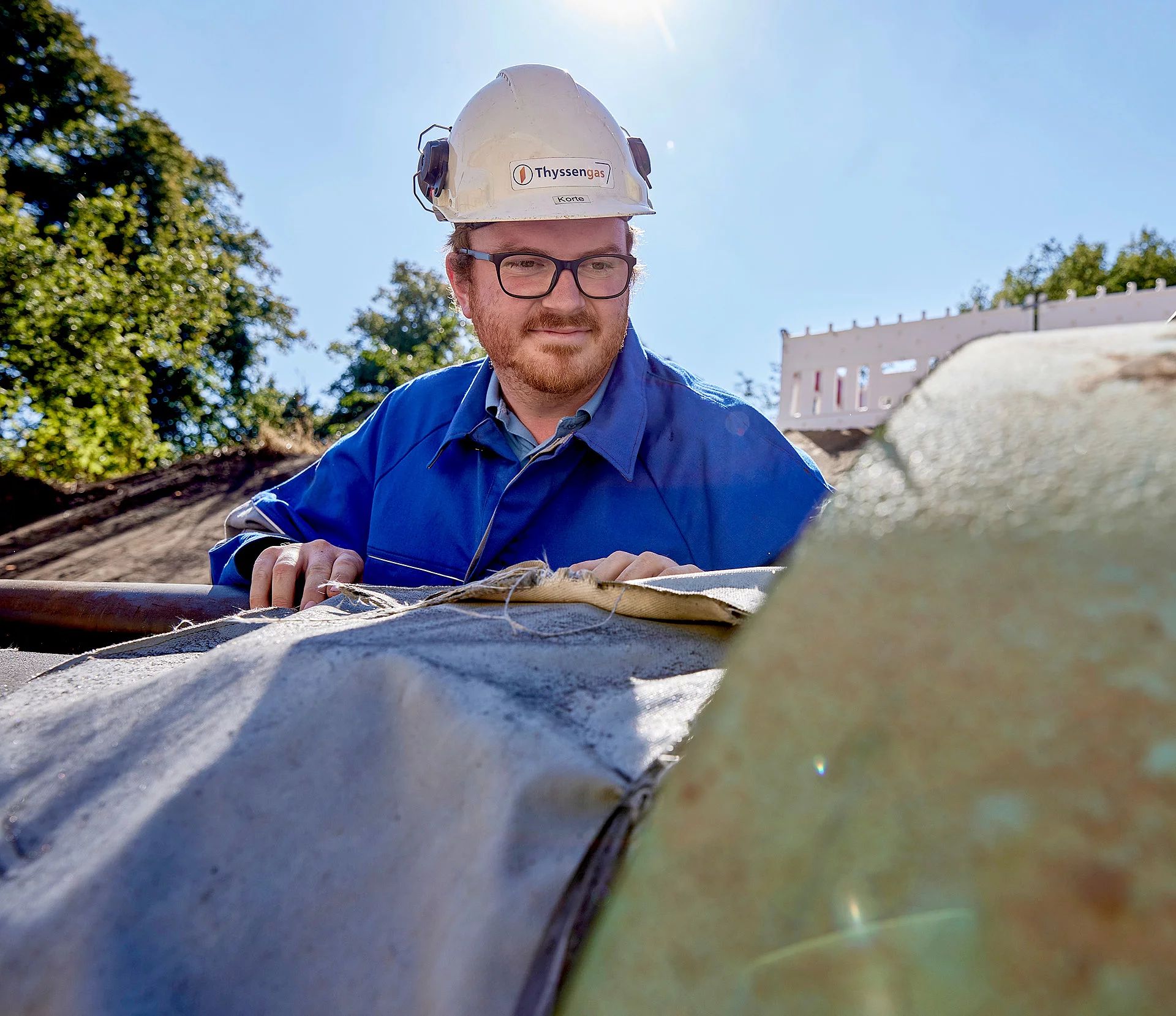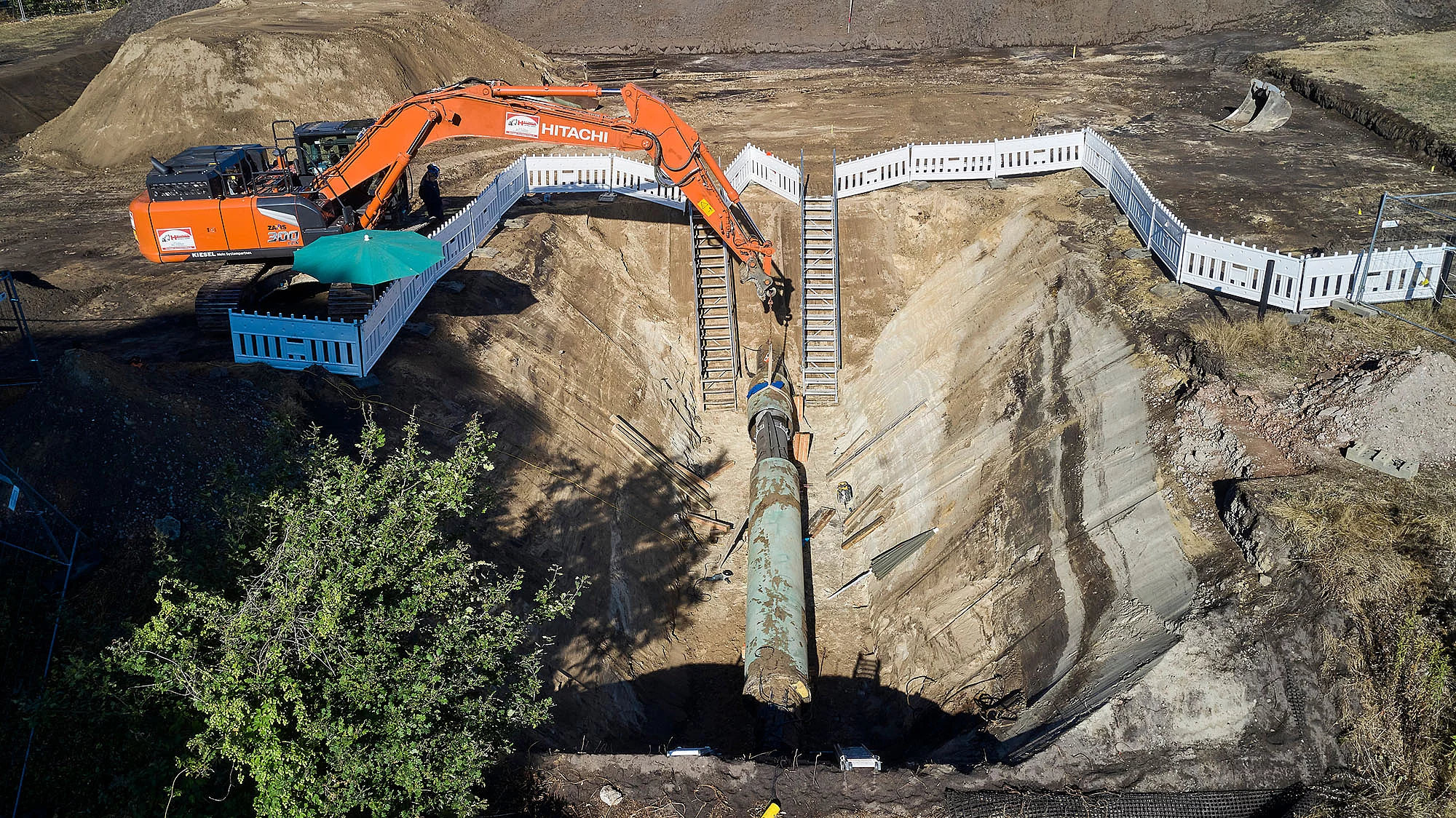The Thyssengas H2 network
Natural gas today, hydrogen tomorrow.
Our goal is to become one of the leading network operators for the transport of hydrogen and other green gases. To achieve this, we are gradually realising a demand-oriented and efficient Thyssengas H2 network with a focus on North Rhine-Westphalia and Lower Saxony.
The starting point is our existing natural gas network, which we will convert specifically for hydrogen transport in the coming years and expand with new H2 pipelines. This will gradually create the necessary infrastructure for the gas of the future: hydrogen.
The "hydrogen motorways"
The centrepiece of the future national hydrogen infrastructure is the H2 core network. This involves the major pipeline connections from north to south and west to east - the nationwide "motorways" for hydrogen transport, so to speak. The aim of the H2 core network is to reach the major hydrogen consumption and production regions and thus connect central locations - such as industrial centres, storage facilities, power plants and import corridors. Together with the other transmission system operators, we have modelled and planned this basic framework of the H2 infrastructure. These transport connections create the conditions for a rapid hydrogen market ramp-up.
We are planning to realise 35 new construction and conversion projects with a total of around 1,100 kilometres of pipeline as part of the H2 core network. In doing so, we want to connect industry and SMEs in North Rhine-Westphalia and Lower Saxony and make an important contribution to the decarbonisation of energy-intensive sectors of the economy.
Following approval by the Federal Network Agency (BNetzA) in October 2024, our most time-critical H2 projects went straight into realisation, i.e. the necessary planning and approval procedures.
We continue to be the point of contact for the market, politicians and the public for our projects whose commissioning is further in the future and whose implementation path still needs to be finalised. Our aim is to make these projects market-ready together with potential H2 customers and to obtain final confirmation from the Federal Network Agency as part of the Integrated Network Development Plan (NDP) for gas and hydrogen.

However, the H2 core network is just the beginning. Starting with the hydrogen motorways, we want to take hydrogen further afield. To where the medium-sized companies, power plants and regional energy suppliers are located. Our aim is to offer these companies a concrete hydrogen perspective.
Parallel to the construction of our lines in the H2 core network, we are developing solutions for connection lines and network expansions together with local stakeholders. We have identified seven regional hydrogen clusters as priority regions. This was based on market enquiries, numerous discussions and regional workshops. We will continue this process even after the H2 core network has been confirmed. This is because we see it as our task to synchronise regional requirements with the technical and regulatory process of grid expansion. This is how we are shaping the transformation towards hydrogen and other green gases.
The Thyssengas H2-Readiness.
Hydrogen has the chemical property that it can split at flaws in the pipework. When it splits, the hydrogen changes from its normal molecular form, consisting of two hydrogen atoms (H2), to its atomic form (H). Only in the atomic form can the hydrogen penetrate the pipe material or react with it, thereby affecting the material. This can lead to defects spreading more quickly and the pipe having to be repaired sooner at this point.


